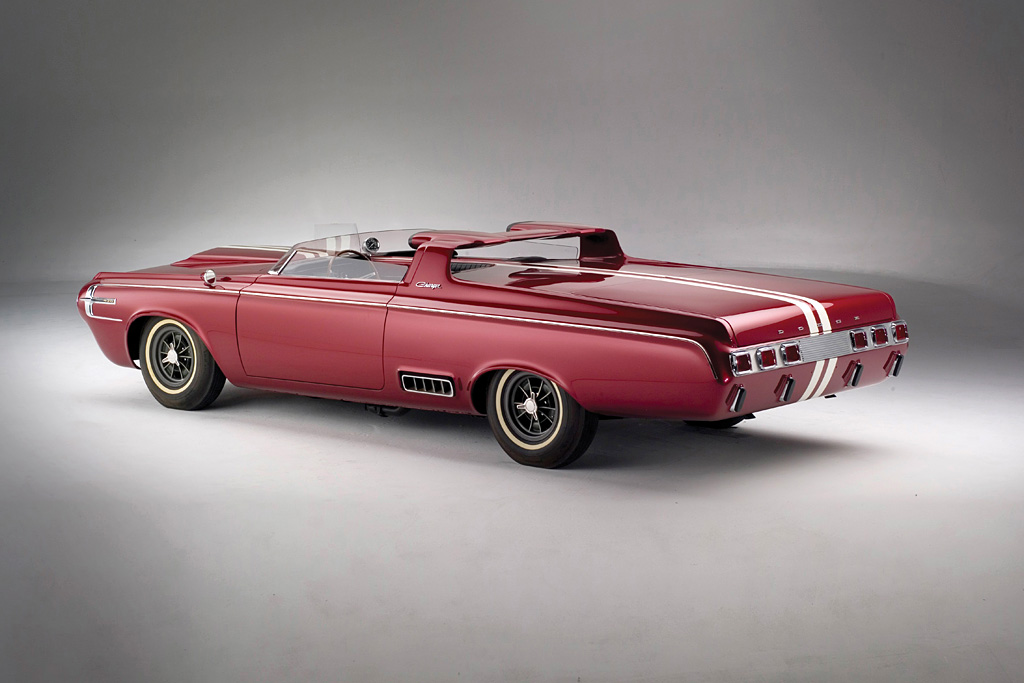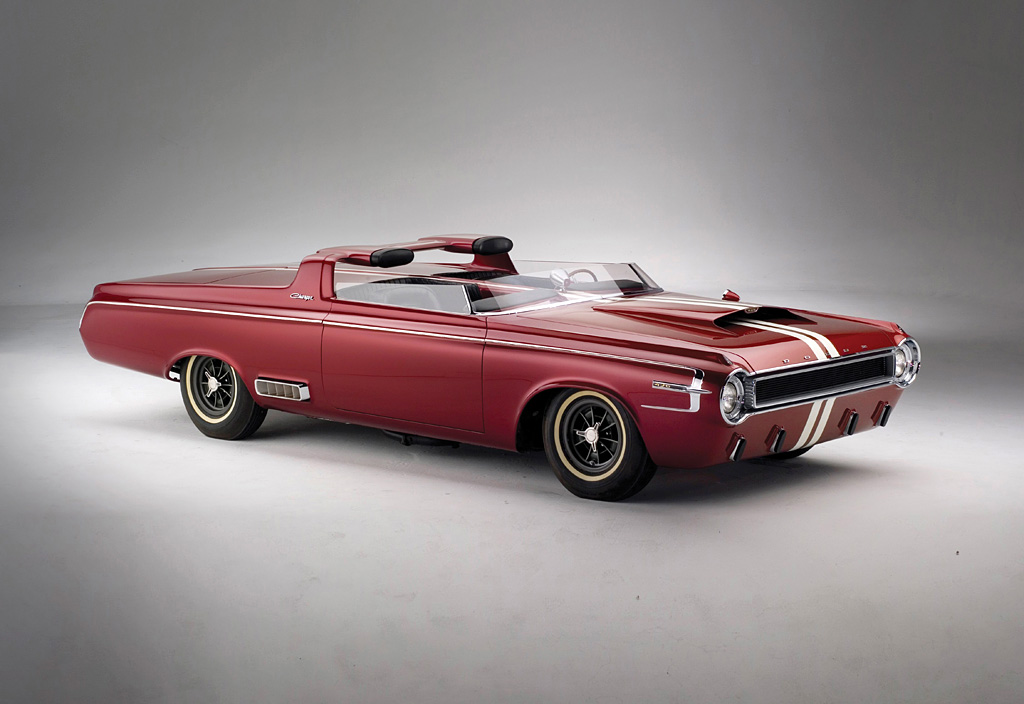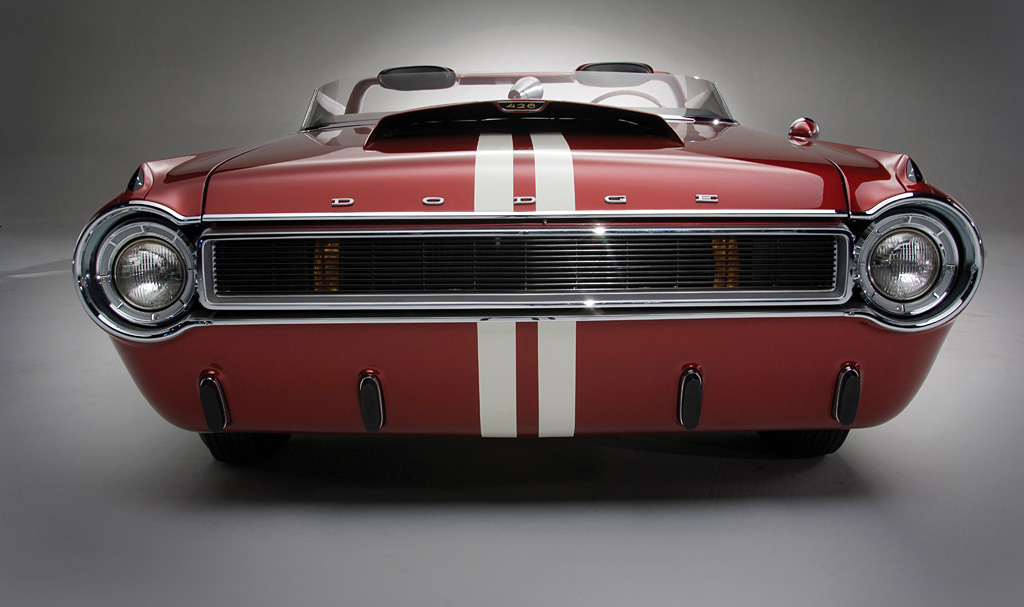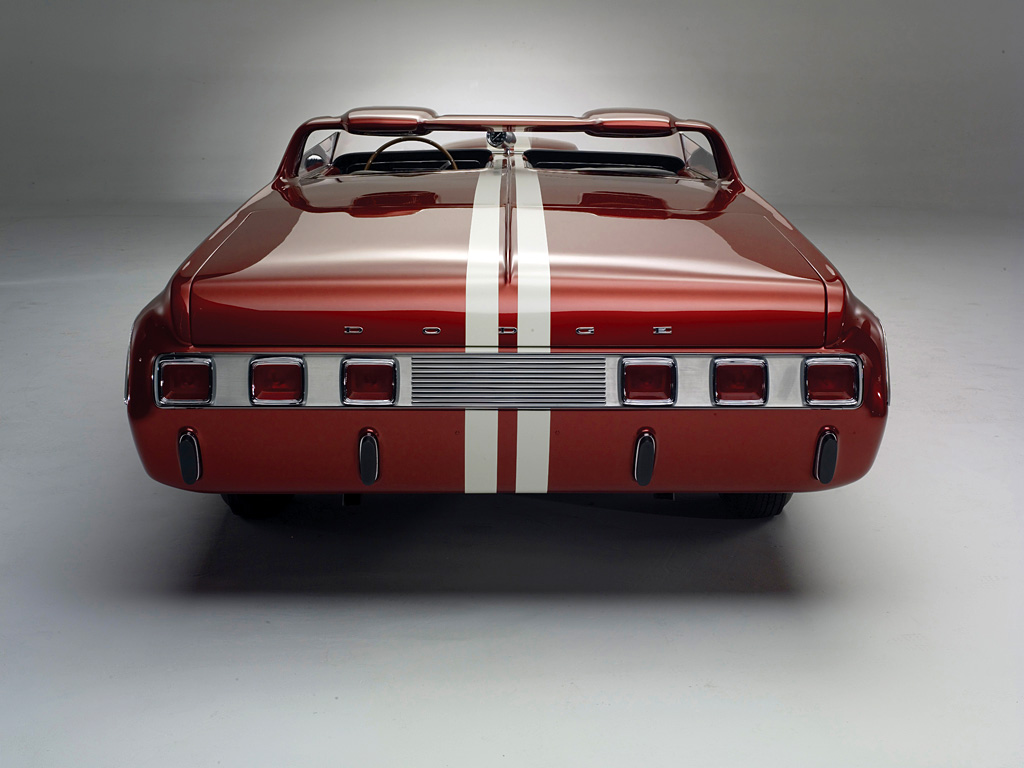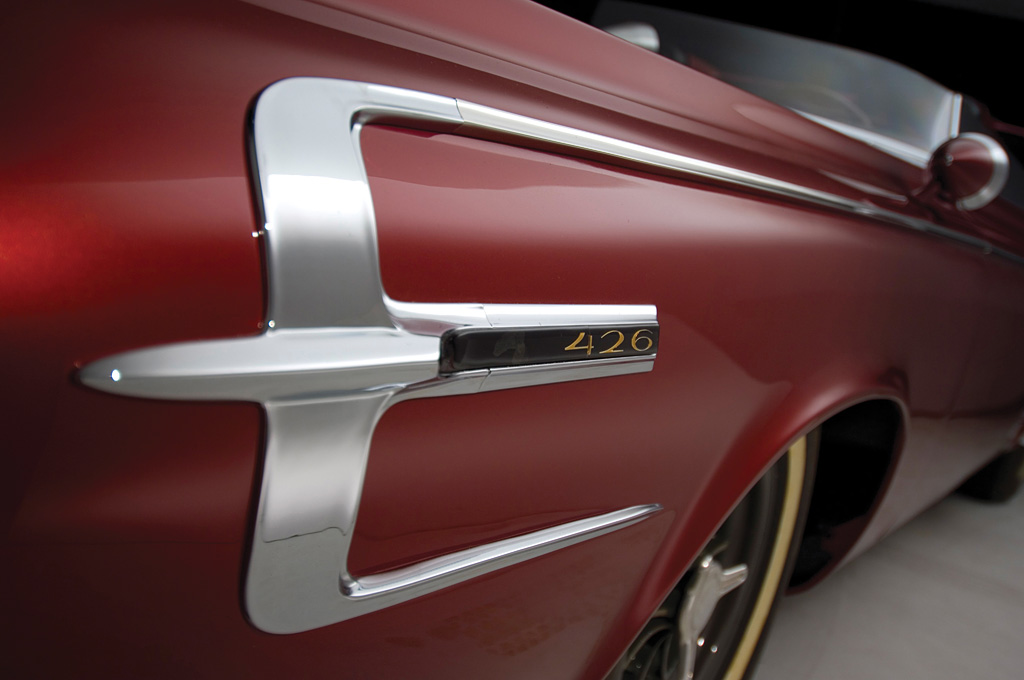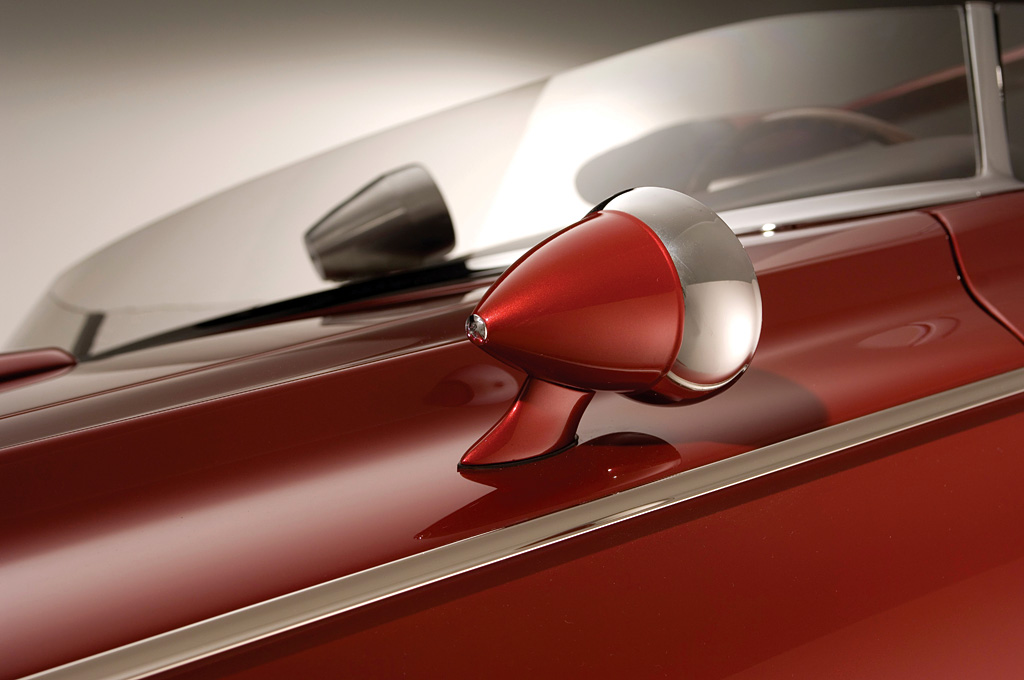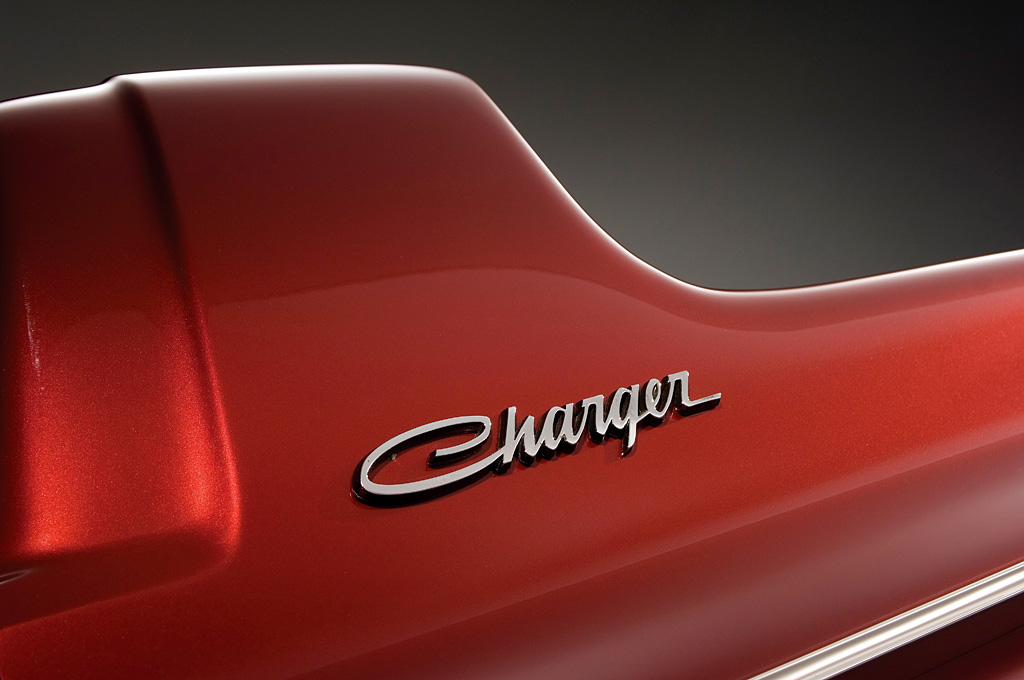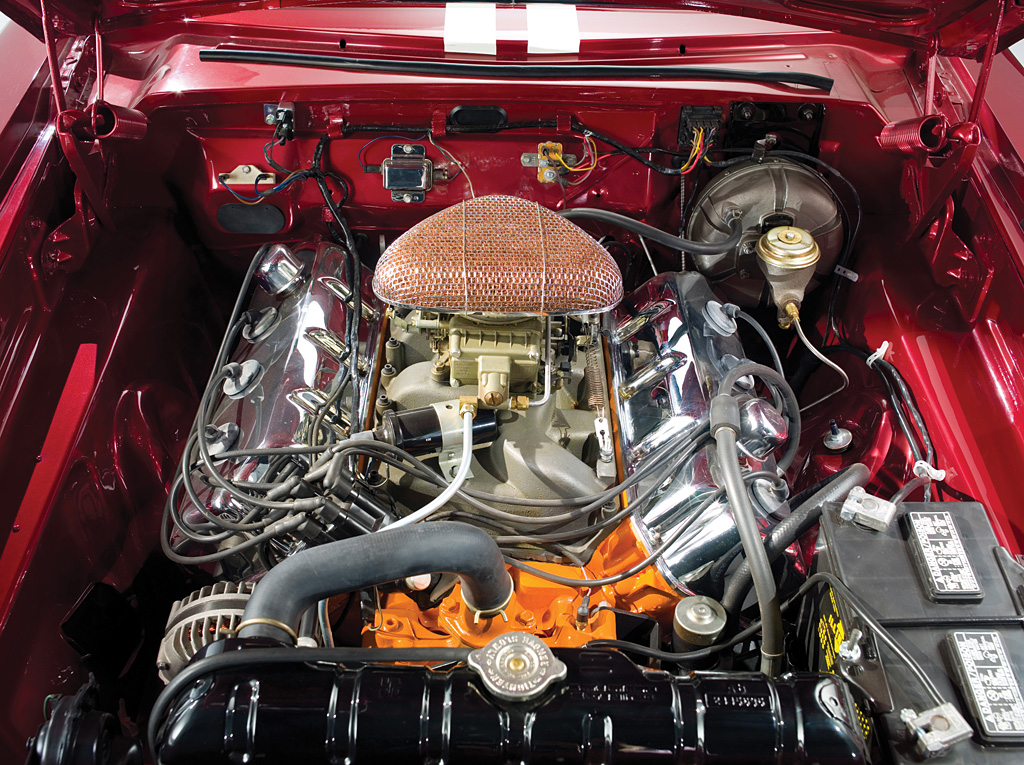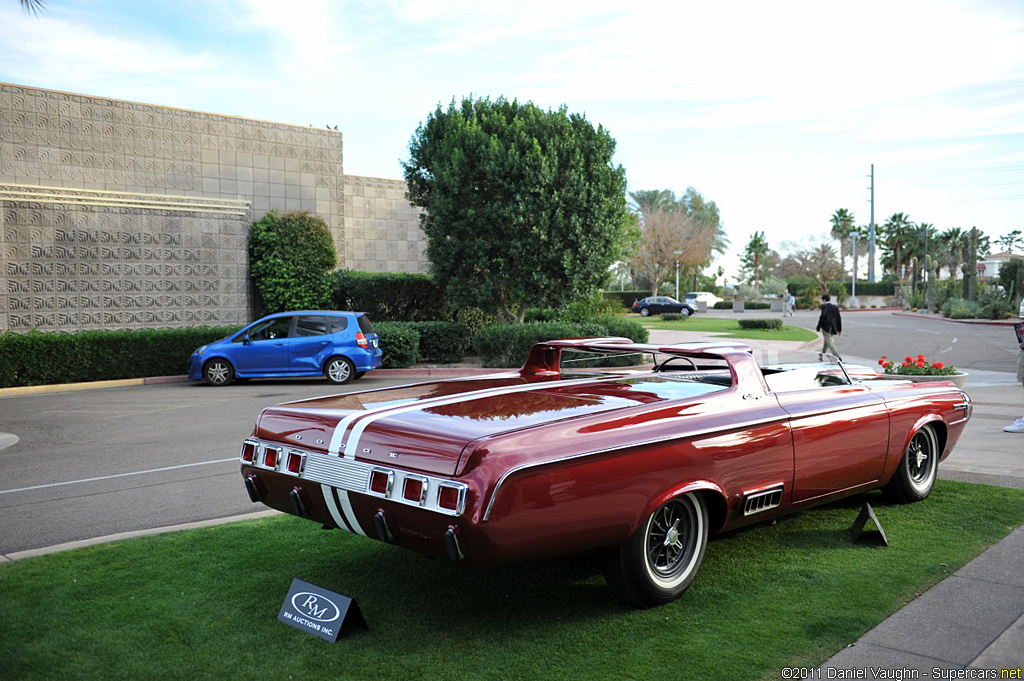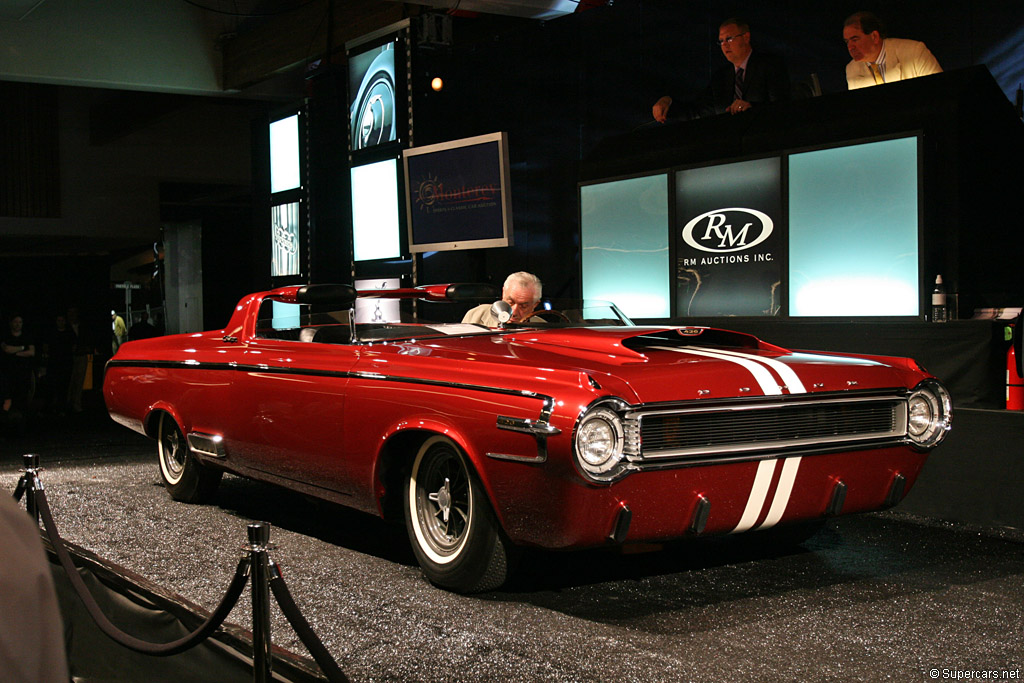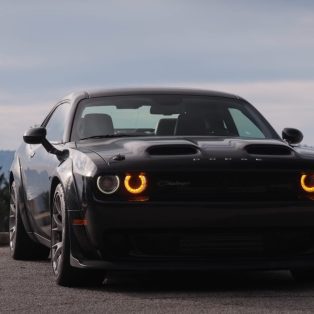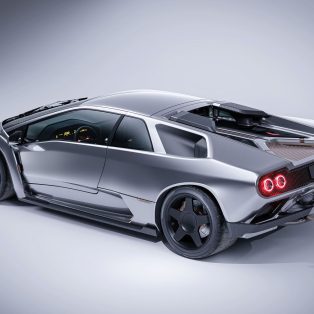1964 Dodge Hemi Charger Concept Car
The first Charger was this concept car meant to showcase the upcoming 426 HEMI. Stylists transformed a stock Polara into a sleek roadster with a custom interior. After appearing at auto shows and dealers with a 383-cubic V8, it was stored for nearly 35 years until notable concept car aficionado Joe Bortz had it restored by Fran Roxas with a correct 600 bhp HEMI. Afterward, was sold by RM to John O’Quinn at the 2007 Monterey Sports & Classic Car Auction for $1,100,000 USD.
2011 Auction Description
By late 1963, when Pontiac’s GTO hit the market and arguably launched the “muscle car” concept, not everyone in Detroit was blindsided, for Chrysler had been quietly preparing to unleash their newest weapon for competition: the new 426-cubic inch “Hemi” V-8. To launch it, Chrysler’s corporate headquarters approved the radical Charger concept car, also marking Chrysler Corporation’s first use of the “Charger” name.
Starting with a bone-stock Dodge Polara, stylists set about creating an awe-inspiring package. Unlike many of the showboats from the 1950s that looked good but often did not even run, there was every intention to make the machine one that would blow the doors off the competition – literally.
Upon arrival in the studio, many of the Polara’s stock components were removed. Up front, the chrome bumper was replaced with a smoothly blended rolled pan, fitted with a quartet of simple, rubber-faced “nerf” bars. The standard grille opening was replaced with a hand-built, blacked-out unit with the inner high-beam headlights deleted. Hand-fabricated surrounds were created for the remaining outer lights, while the front of the hood was rolled slightly and a functional cold-air scoop was added. Several production-based detail items, such as the D-O-D-G-E letters across the hood and the ornamental fender badges, were retained, but body side-trim was modified, leaving only a hint and basic outline of the original brightwork.
Virtually the entire passenger compartment was custom-crafted and transformed into a two-passenger configuration with a panel that extended the rear deck to the back of the front seats. A special low-cut wraparound windscreen was added, and a dramatic integral roll-bar/headrest was equipped with individual pods for the two occupants. A pair of special, dark charcoal, leather-covered bucket seats was produced from Superform padding.
Separating the front-seat passengers into individual pods was a padded divider that housed many of the controls on the center console. A tri-spoke steering wheel with a walnut rim was used, along with handcrafted bright metal accelerator and brake pedals. While the basic original instrument cluster was retained, an 8,000-rpm Stewart-Warner tachometer was installed in the center of the dashboard.
At the rear, the chrome bumper was removed and replaced by a rolled pan and rubber-padded nerf bars. Stock taillights were retained but spaced wider apart and mounted to a custom panel eliminating the license plate housing. Other custom touches included shaved door handles and a pair of chromed exhaust ports, which would operate with cutouts diverting the exhaust from the stock dual mufflers. Special Halibrand wheels were fitted with Goodyear whitewall tires. As completed, the package was low, wide, lean and mean. At just under 48 inches high, it was a visual masterpiece.
While Dodge intended to use the car to showcase the all-new 426 Hemi’s ground-pounding performance, a critical problem arose. A very limited number of hand-built motors were being produced for select racing teams, but at least one was earmarked for use in the Charger concept. However, when a Chrysler-backed racing team blew up their Hemi, the unit slated for use in the show car was diverted to them.
As the time drew nearer for the curtain to go up on the Charger, there simply was no engine available to fulfill the “426” badges placed inside the air scoop and on its fenders. Despite press releases to the contrary, when the Charger debuted, the actual engine under the hood was the same 305-horse, 383-cubic inch V-8 that came with the donor Polara. One period show folder actually stated it had the 426 “Wedge” V-8 with 365 hp, but that engine too was never installed. Shifting was accomplished through a beefed-up automatic transmission, with power delivered to a Sure-Grip rear axle. Maybe the media were less demanding in those days, for as the car toured the country, the engine compartment was never opened.
For nearly a year, the Charger appeared at auto shows and select Dodge dealerships around the country. When it retired, a quirk of fate helped it escape the crusher’s jaws, which claimed so many show and concept cars of the day. A prominent Dodge dealer in Pennsylvania acquired the Charger, later giving it to his son, who performed a number of modifications and eventually stored it for nearly 35 years.
In 1999, concept and show car collector Joe Bortz located the Charger, negotiated its purchase and brought it to Chicago. Starting on a project that would consume several years, he enlisted the services of Fran Roxas, the world-famous restorer, to return it to its original glory with a no-expense-spared rotisserie restoration. The hardest items to locate were period-correct Halibrand wheels, as the originals were now worn from age. Amazingly, Roxas had a customer willing to part with a set of correct NOS wheels, and the project was now rolling.
When Mr. Bortz embarked on this project, his goal was to restore the Charger as it was originally intended, and that meant putting a Chrysler-built Hemi under the hood. Not just any Hemi would do; he wanted one of the early hand-built special Hemis that was supposed to have gone into the Charger. Turning to Hemi expert John Arruzza, a mission was issued: find the right engine and related parts for this car and then rebuild it so that it will roar as originally planned back in late 1963.
It took some time and a lot of money, but Arruzza managed to locate one of the original 15 racing Hemi engines, actually the lucky 13th one built, complete with a block casting dated October 1963. Arruzza also scored a pair of original 1964 NASCAR-spec Hemi heads and even a vintage Holley four-barrel carburetor fitted to a magnesium intake manifold. Many of the other components used were also original or NOS, such as the exhaust manifolds, spark plug tubes and valve covers, plus many valvetrain components.
A number of new internal engine components were installed, including Manley connecting rods, Ross custom pistons and a Callies forged crank. One of the reasons for the scarcity of these early Hemi blocks was that they did have their problems in the casting department, and number 13 was no exception. However, Arruzza carefully inspected it and made the necessary repairs to ensure its integrity and to fulfill Mr. Bortz’s goal for the Charger to run as it was originally intended.
When finished, the Hemi built up a 9.6:1 compression ratio and pumped out an estimated 600 horsepower! Transported to Roxas’ shop, the engine was finally married to the car it was intended for nearly 40 years earlier, and Bortz’s wishes were fulfilled. In the process, Roxas claimed it was one of his finest achievements, and for Arruzza, he knew that his skill and knowledge had helped preserve a true piece of automotive history.
After many years of first searching, then negotiating and finally completing the purchase, followed by an exhaustive search for the right parts, the very first Dodge Charger was finally complete. Since completion, the car was operated only sparingly and, since 2007, has been part of the collection of the late John M. O’Quinn, stored in climate-controlled storage.
Story by Supercars.net, RM Auctions
1964 Dodge Hemi Charger Concept Car Gallery
See full 1964 Dodge Hemi Charger Concept Car Gallery
In Detail
| submitted by | admin |
| type | Concept / Prototype Car |
| built at | USA |
| production | 1 |
| engine | HEMI V8 |
| position | Front, Longitudinal |
| aspiration | Natural |
| displacement | 6981 cc / 426 in³ |
| compression | 9.6:1 |
| power | 447.4 kw / 600 bhp |
| specific output | 85.95 bhp per litre |
| driven wheels | RWD |
| front brakes | Drums |
| rear brakes | Drums |
| f suspension | Torsion Bars |
| r suspension | Live Axle w/Semi-Elliptic Leaf Springs |
| transmission | 3-Speed Auto |
| final drive | 4.56:1 |
Auction Sales History
1964 Dodge Hemi Charger Concept Car – sold for $715,000 From the Estate of John O’Quinn. Restored by multiple award-winner Fran Roxas. Formerly owned by noted concept car collector Joe Bortz. Restored with one of the original 15 Chrysler race Hemi engines. The first Dodge to be fitted with “Charger” nameplate. The Chrysler show car intended to introduce the new-for-1964 “Hemi” V-8.
Auction Source: 2011 Automobiles of Arizona by RM Auctions
1964 Dodge Hemi Charger Concept – sold for $1,100,000
The ultimate of all muscle and concept cars, the Dodge Charger offered here is likely the most important Hemi powered car in existence. Fantastic in its presentation, unmatched in its provenance, this Concept Car represents an early look at the evolution and origination of the muscle car and, simply put, its historical importance is without comparison.
After a very tough decision on the part of the owner, for the first time ever the original 1964 Dodge Charger Concept Car is being offered at auction. This very historic and authenticated muscle-bound show-piece trumps many of the “show-but no go” cars of the 1950s, which had wonderful style but were often fitted with less than impressive powerplants. All too many original show cars were cut up after their time on the road was over, or cannibalized for other projects. Making this example that much more special is that it remained basically intact during its many years out of the limelight. This is not just a wild dream car, but also one that led the way to the muscle-car generation and set the standard for what would become the most sought after and most spectacular cars of that generation, – those that shared the name Dodge!
Auction Source: 2007 Monterey Preview





